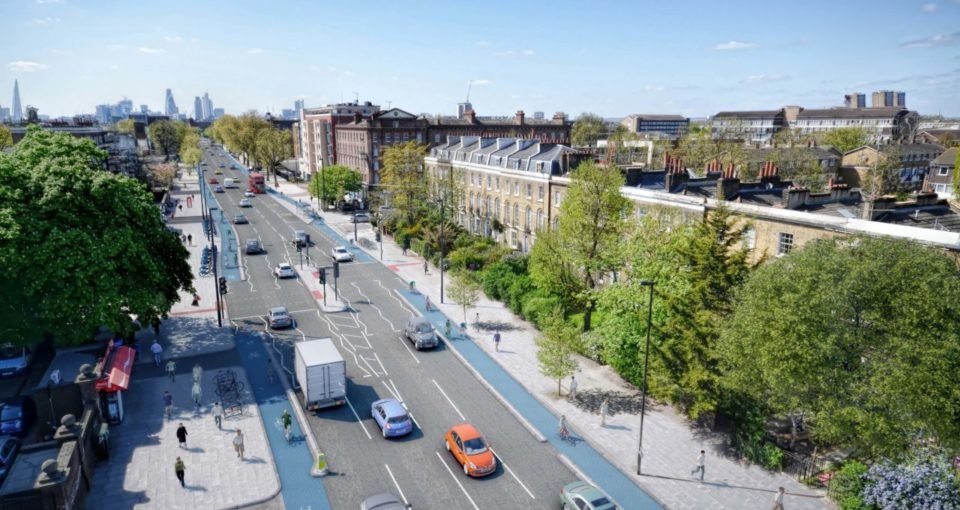On Friday 21st April, Theresa May’s government announced a £1.2 billion budget to increase the popularity of cycling and walking in England. Packaged by an expert committee, the Cycling and Walking Investment Strategy [PDF] legally binds the government to committing to improving self-propelled mobility over short distances within England.
Some highlights
The new yardstick metric is called a “stage”, defined by when there is a change in the form of transport. For instance, if you were living outside London and worked near an underground station, your commute might look like: Cycle > Overground > Underground > Walk, which would count as two stages.
Set: A goal of 300 stages per person per year by 2025.
The percentage of children aged from 5 to 10 years that usually walked to school was 49% in 2014. The goal is to raise this to 55% by 2025.
Modeshift STARS to continue recognising schools for implementing better infrastructure for cyclists, and other low-impact transport methods.
Living Streets’ Walk to School and Travel Tracker projects shall receive further funding of £1m.
Programme funding until 2021: Bikeability £50m, Cycle City Ambition Fund £101m, Highways England £85m, Access Fund £80m.
Cycle to Work Scheme update: over 1 million people have taken advantage of the scheme, which involves over 2,500 bike retailers and 53,500 employers.
Aim is to double the amount of cycling journeys. 0.8 billion stages in 2013. Goal in 2025: 1.6 billion stages.
Total strategy spend amounts to £26 per head (total spend divided by population).
The Department will invest a further £5 million into the Cycle-Rail Programme to enable ongoing delivery of measures to enhance cycle facilities at train stations.
Shortcomings
Hard to see what’s particularly novel new about this. Of course, it’s comforting to know that June’s election won’t entirely reverse momentum in the same way that talking about environmental politics in the U.S. feels like gossip.
When a single roundabout can cost £1m, how far will £1.2b go before 2021?
Heavy reliance on local authorities and Local Enterprise Partnerships (LEPs) – central government will only pay £316m.
Tech worth supporting
PlusBike – an information portal for those that use both bike and rail in their journeys. Funded by department for transport, PlusBike is linked within the National Rail Enquiries iPhone app, Android app and website. Goal is to get a better feel for bike facilites at the stations and onboard.
Propensity to Cycle Tool – Department-funded Propensity to Cycle Tool (PCT) is a free, open source strategic planning tool, developed in partnership with Cambridge, Leeds, Westminster and the London School of Hygiene & Tropical Medicine. By looking at origin and destination data, as well as trip distance and topography, PCT visualises areas that stand a chance of converting motorised commuters to cycle-commuters. The project breaks down into four scenarios:
Go Dutch: What would happen if people had the same liklihood of commuting as they do in Holland?
E-bike scenario: How to cater for longer, hillier cycling?
How to meet the government’s goal of doubling the amount of people who cycle to work?
What would happen if women were just as likely to cycle to work as men?
